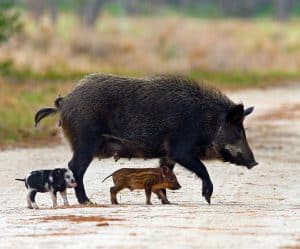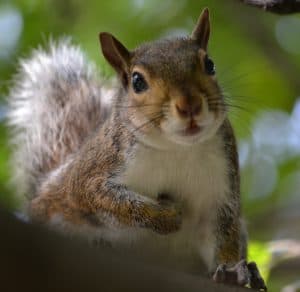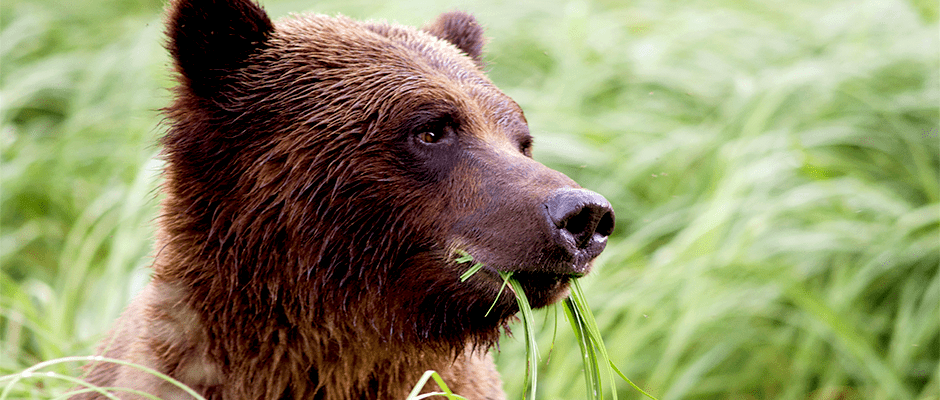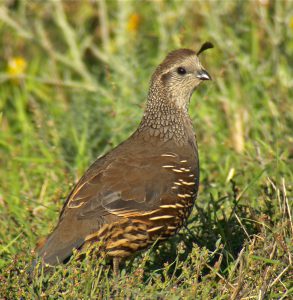Share this article
Paper questions use of science in wildlife management
Wildlife managers have long stressed the critical role science plays in their field, but a recent paper has created controversy by suggesting that “hunt management” decisions in the United States and Canada fall short on the “hallmarks of science.”
“A lot of foundational components you would expect if a system truly did have any resemblance to the scientific approach were lacking in the majority of systems,” said Kyle Artelle, lead author on the study published in Science Advances. “We need more clarity on where the science begins and ends in wildlife management. These are publicly owned resources, so the public has a right to know about how these resources are managed. Managing without a strong evidence basis could pose a risk to managed populations.”
The paper isn’t the only such criticism to surface recently. In a January commentary published in the Journal of Wildlife Management, TWS member Sarah Sells, a doctoral candidate at the University of Montana, and six co-authors, argued that some wildlife research appears to lack scientific rigor. Evaluating studies published in the journal from August 2013 to July 2016, the authors concluded that nearly 44 percent did not seem to stem from a hypothesis, putting the research’s reliability in question.

A mother boar leads her piglets through the Guana Tolomato Matanzas National Estuarine Research Reserve Wildlife Management Area in Florida. ©Craig O’Neal
“Both our papers agree that more communication and transparency are important,” Sells said. “Our point was to discuss what the scientific method entails and show we can improve the extent to which we test hypotheses.”
She and her partners believe the root of the problem could be poor general awareness and communication of the elements of rigorous science. Their criticism harkens back to a 1981 JWM paper warning that “wildlife science may be headed for a crash under the weight of unreliable knowledge,” partly as a result of “inadequate or misused scientific methods.”
A biologist with the Raincoast Conservation Foundation and postdoctoral fellow at the University of Victoria, Artelle and his colleagues examined management plans and other publicly accessible agency documents describing 667 hunt management systems in almost every American state and Canadian province. They searched for four scientific attributes — clear objectives, transparency, use of evidence and independent scrutiny — by basic yardsticks like the presentation of population estimates, and then they verified their analyses with the agencies.
“Although we set the bar low on these criteria, we were surprised that in 60 percent of systems, we found fewer than half the criteria we were looking for,” Artelle said. “In only 6 percent of cases did we find external people double-checking work to weed out bias, testing to make sure conclusions reached are supported by the data and finding methodological error that an outside set of eyes can help identify. That’s a key part of any endeavor considered scientific.”
The study has sparked criticism within the wildlife community, including from John McDonald, president of The Wildlife Society, who questioned its methodology. Most agencies “do a good job” of regulating, monitoring and reporting, he said.
“It’s good to question the basis for decision-making and have outside review of sources, data interpretation and objective-setting procedures,” McDonald said, but the authors seemed unclear on how states establish hunting seasons, bag limits and objectives, and they treated various kinds of hunted species equally, even though the rationales and motives for allowing hunting for each may be quite different.
“A lot of the pieces they call for are either not going to be collected by states or provinces, are collected or summarized but weren’t discovered by the authors or are not necessary in the way the hunting system is set up,” McDonald said.
For some wildlife, including nuisance species like the feral hogs (Sus scrofa) and Burmese pythons (Python bivittatus), and abundant small species like quail (Coturnix coturnix) and raccoons (Procyon lotor), agencies may acquire the kind of population and harvest data the researchers focused on, McDonald said, but detailing them may not be very relevant to managing a hunting program.
“States have limited resources and broad mandates for all species,” he said. They’re likely to collect more data and have more defined objectives on “big game,” which have fewer numbers, higher harvest demand and populations potentially more impacted by harvests. Most agencies probably don’t have a statewide population objective or an overall harvest quota for gray squirrels (Sciurus carolinensis), two criteria Artelle’s team cites as hallmarks of the use of science in managing harvests, McDonald said. The goal may instead be to permit the public to harvest squirrels in a sustainable manner, he said, so seasons and bag limits are set conservatively and may be monitored by hunter surveys and assessments of habitat availability rather than population estimates.

An eastern gray squirrel sits in a tree. ©DaPuglet
“These authors were lumping things that were disparate and trying to hold them to the same standards,” McDonald said.
Though her study does raise concerns about the application of the scientific method in wildlife management, Sells offers similar caution regarding Artelle’s publication.
“They’re offering a set of criteria for what science-based management should entail,” she said. “In a perfect world, we’d have scientific research available to managers for all decisions, but they need to make decisions with the best available information, and I don’t know that these are settled criteria everyone would agree with. Five out of 11 are about transparency, but lack of transparency doesn’t mean the science is missing.”
Some wildlife managers have also argued that the field is inherently unscientific because it must consider political, societal and ethical factors.
“Management goes well beyond science in decision-making,” Artelle said, “but where the science begins and ends in any decisions should be disclosed so there can be discussion among the public about how these resources should be dealt with. This isn’t anti-hunting. It’s about transparent discussions.”
Contrary to the study’s conclusions on the dearth of independent scrutiny, McDonald said, most American agencies are guided by some form of citizen commission that holds public hearings and invites comments on seasons, bag limits and other issues. Sending each management plan to external reviewers would be difficult, he said, but anyone can obtain and analyze these documents or harvest reports by contacting the agencies.
Header Image: A grizzly bear nibbles on vegetation in British Columbia. ©Kyle Artelle









